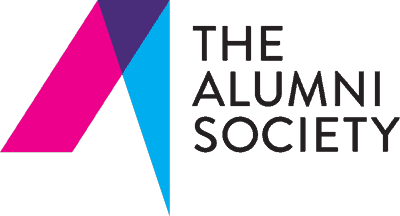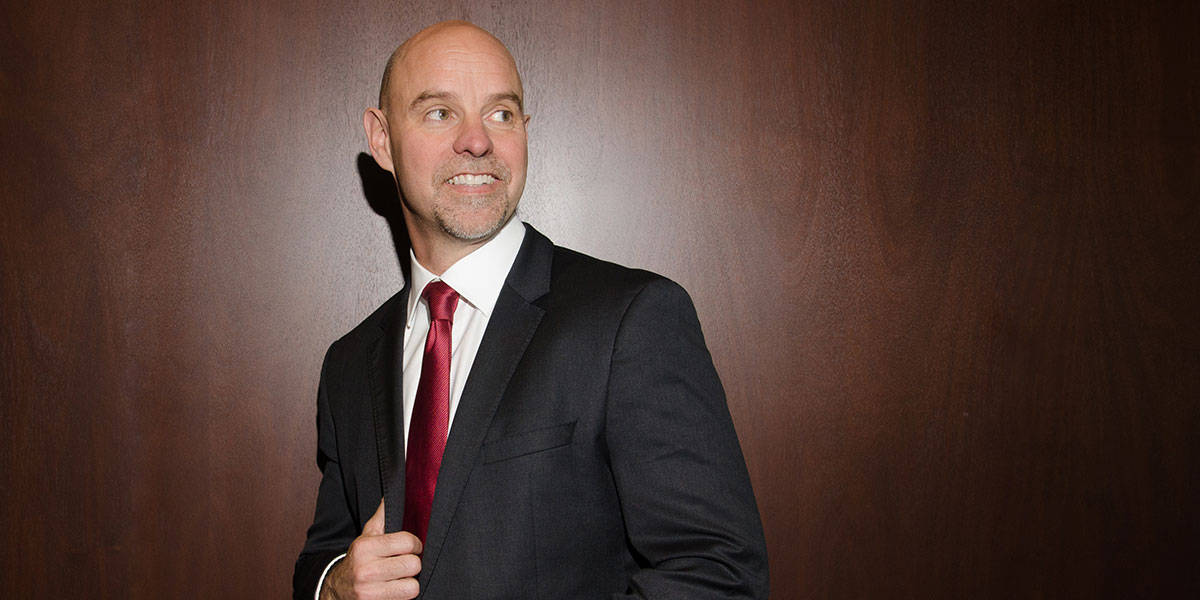Words by Michelle Markelz
The ladder would be an accurate metaphor for mobility in corporate America—15 years ago. The narrative of entrepreneurial success has long featured a protagonist whose climb was a singular effort fueled by dedication, determination, and “rugged individualism,” as President Herbert Hoover called it. The ubiquity of the phrase “climbing the corporate ladder” harkens the strength those motifs have in our business and social cultures, but the undeniable reality is, the ladder is no longer the exclusive—or even the preferred—way to the top.
Nearly 40 percent of the US population identifies as an ethnic minority. Almost half of those people (54 million) are Hispanic. By 2050, it is anticipated that Hispanics alone will comprise 30 percent of the country. This outlook makes two facts clear for businesses: nearly one-third of their customers and talent will be Hispanic; and both customers and employees will look for authentic recognition of that fact. In the corporate workplace, that translates to a paradigm shift. No longer can the climb be up the one-lane ladder; a way must be made for a communal rise.
“So much of the world view and the values of many Latinos run counter to the way that corporations work,” says Andrés Tapia, senior partner at talent consultant Korn Ferry and author of The Inclusion Paradox: The Obama Era and the Transformation of Global Diversity. Tapia, who has helped companies diversify their leadership for more than two decades, has observed that many Latinos embrace the archetypical dimensions of their culture. One of these is an emphasis on community and communal achievement.
Contrast this with the mind-set of most corporations, which is individualistic in its interpretation of the source of identity, says Tapia. “An environment where performance, rewards, and professional development are all up to you sounds great from individualists’ world view, but communal Latinos might ask, ‘Isn’t it up to us?’”
This disconnect is a fundamental weak spot in the diversity and inclusion initiatives of corporations of all sizes in America. Addressing this deficiency, if done properly, will take more than a quarter or a single fiscal year.
A number of factors coalesce to create a corporate environment. Cultivating one that is truly inclusive will often require a departure from what was a historically successful model, but as Tapia and others reiterate, the corporate world is one place where history can’t afford to repeat itself. The worldwide impact of the 2008 financial crisis proved the undeniable interconnectedness and interdependence of economies around the world, which suggests the ability to function across cultures is an imperative for businesses. Emerging economies present the next generation of growth opportunities for American business. To seize them, as Oracle’s Profitmagazine reports, “cross-cultural core competence is at the crux of today’s sustainable competitive advantage.”
The business case for diversity has been articulated for decades and is not widely disputed. But the methodology to achieve diversity remains unclear. The pressure to abandon isolationism is strong, but the question remains: how do corporations make diversity intentions actionable?
The answer is multifaceted. It starts with leadership. “When leadership teams are not diverse, they often don’t realize their assessment of what makes a good leader can be culturally biased,” writes Tapia in The Inclusion Paradox. “We’re familiar with the European-American leadership model of assertiveness, speaking one’s mind and challenging others openly. But there are other strong leadership models (such as in some Asian cultures) that more heavily emphasize consensus-building and face-saving, with less public confrontation.” Erika Karp, CEO of Cornerstone Capital, echoed this when she told Wharton Magazine, “New ways to measure excellence in collaborative behaviors must be considered. Only then can we tap into the potential for extraordinary outcomes derived through a diverse pool of talent.”
One corporation setting the standard for successful diversity and inclusion is Kaiser Permanente. Consistently ranked in the top five of DiversityInc’s top 50 companies for diversity, the health-care and insurance provider is representative of its heterogeneous customer base from the top down. Its corporate board is comprised mostly of women (60 percent) and racial minorities (55 percent African-American, Asian, or Latino), but the organization doesn’t consider diversity in only biological terms.
“We think about the inherent diversity dimensions that come along with us, such as race and gender, as well as the tremendously rich dimensions we acquire like personality, how our faith informs who we are, and diversity of thought,” says Ronald Copeland, MD, Kaiser Permanente’s chief diversity and inclusion officer. Research has shown, says Copeland, that highly diverse teams outperform monolithic teams in terms of engagement, creativity, and business success, but the caveat is that leadership must be inclusive to unleash that potential.
Because Kaiser is aware that exceptional leadership is a skill, it has created an entire curriculum around leading diverse teams. The content both informs and coaches leaders, teaching them how to recognize unconscious bias and promoting behaviors that foster inclusive environments.
Organizations that have found success in fulfilling their diversity and inclusion intentions are those with clear objectives that are set and held accountable by leadership—including deliverables and deadlines—and that complement the business. It is also crucial for leaders to have a way to measure the progress of the objectives. Metrics are critical to Kaiser’s ability to make continuous improvements to its program. The company uses demographic data on its patient population to set quality-improvement targets and conducts employee-engagement surveys each year to gauge how well it’s meeting its goals for engagement and retention of talent.
The discreet way an organization measures its progress may differ based on its goals. If simple quotas are the objective—though many have seen the failure of this approach—demographics are the most obviously useful metric. For a more nuanced analysis, an organization can measure turnover, promotion, and engagement of diverse talent.
“Engagement” is a broad term, but purposefully so. It can include many factors of the workplace that, from the perspective of the historical majority, have no association with identity, but upon inspection from a minority perspective, are closely tied to identity. In his book, Tapia uses the example of medical benefits. Coverage that includes preventative care may sound innocuous, but it may be more beneficial to individualists who are likely to take control of their health, he explains. Employees with a communal mind-set may be better served by on-site health-care clinics to which they can bring their families and be part of larger wellness programming.
Employee resource groups (ERGs) could be considered the most direct response to the desire for communal culture, and companies are beginning to see their direct benefit to the business. In its 2013 ERG study, the Hispanic Association on Corporate Responsibility found that among its corporate respondents, 93 percent of Hispanic ERG leaders indicated their role increased access and visibility to corporate executives, and 86 percent reported increased opportunities for professional development. Mercer similarly reported on ERGs in 2011 and found that 51 percent of respondent companies tapped their ERGs to inform leadership on diversity strategies and action plans. Seventy-one percent reported their ERGs functioned as liaisons to outside organizations, such as schools and professional organizations, from which new talent could be recruited.
Though these numbers are encouraging, ERGs are not a panacea. Tapia cautions that care must be taken to avoid making silos out of affinity groups. “Members of communitarian cultures long for a sense of connection to the larger community, which is the enterprise,” he writes in The Inclusion Paradox. “If their only connection is to the demographic affinity group and not to the full corporate community, their sense of identity within the corporate walls will be incomplete, leading to disengagement and eventually turnover.” This is why, among other things, it is key for ERG membership to be open to any and all employees—even those who may not personally express a characteristic of the group, but who have an association and shared interest in it. For example, a straight, white male may want to join a lesbian, gay, bisexual, transgender (LGBT) affinity group to better understand the experience of his gay colleagues and show his support. Similarly, a woman who has biracial children may want to join a group for African-American employees. These crossover affiliations, when allowed and encouraged, promote an environment of openness and increased empathy among groups.
Many leaders—minority or otherwise—point to their mentors as critical agents in their development and success. Mentorship is an important part of any diversity and inclusion strategy, but it is, perhaps, the element most difficult to plan for.
Truly effective mentor-mentee relationships are not arranged, but are formed and maintained organically. Furthermore, Tapia points out that “traditional mentoring has the inherent contradiction of creating a vehicle for inclusion—not necessarily by dismantling the barriers of exclusion, but by revealing paths around them.” By this, he means that one party, the mentor, acts as a shepherd perpetuating the exclusivity of the upper echelons. Truly successful mentoring programs must have an element of reciprocity in which the senior party gains something as well.
The next generation will comprise the most diverse workplace in American history. Though the parents of baby boomers worked in a society that was five parts white and one part people of color, that generation’s grandchildren will enter their working years having grown up with just as many children of color as white children.
Their expectation of inclusion will be even higher, and businesses that want to attract the best talent will have to manage that desire. As the conversation shifts from accommodation to acculturation, in the sense that multiculturalism will become its own culture, professionals and high-achievers will watch for a paradigm shift.
The ladder as a vehicle of advancement is obsolete. Think instead of a rowboat, in which passengers are pulling in the same direction. Tomorrow’s talent will travel further as a team than they could ever have climbed on their own.


